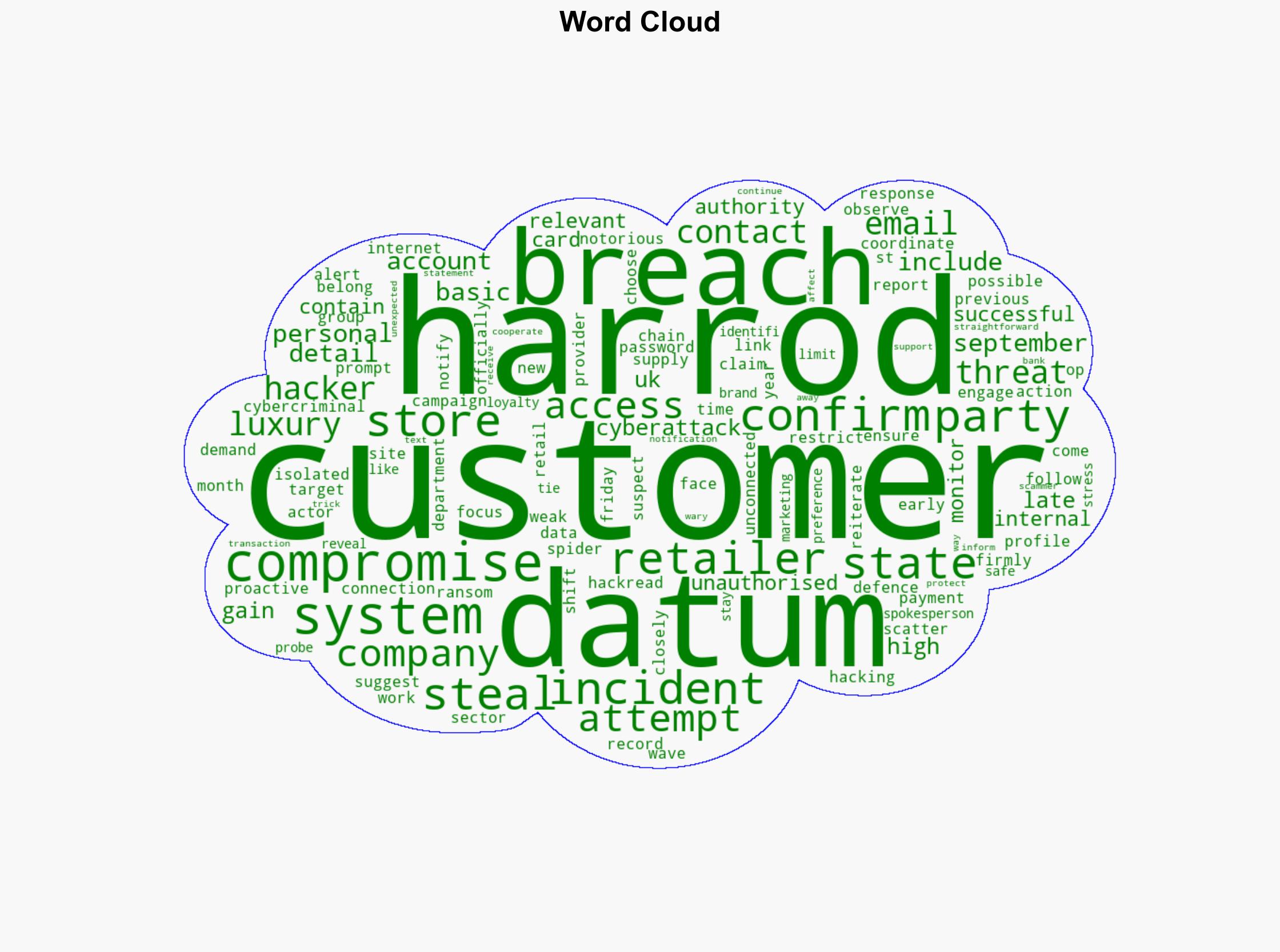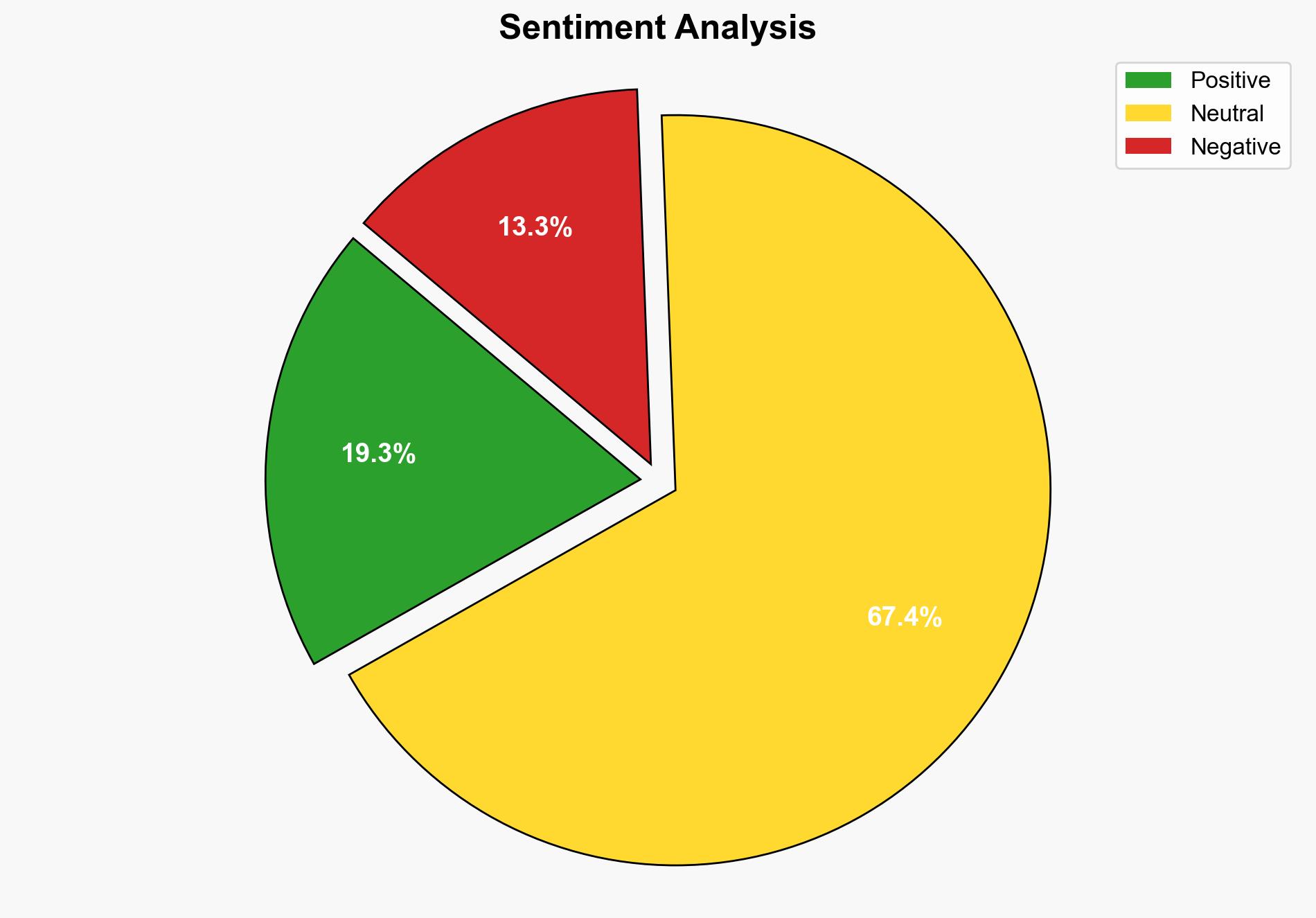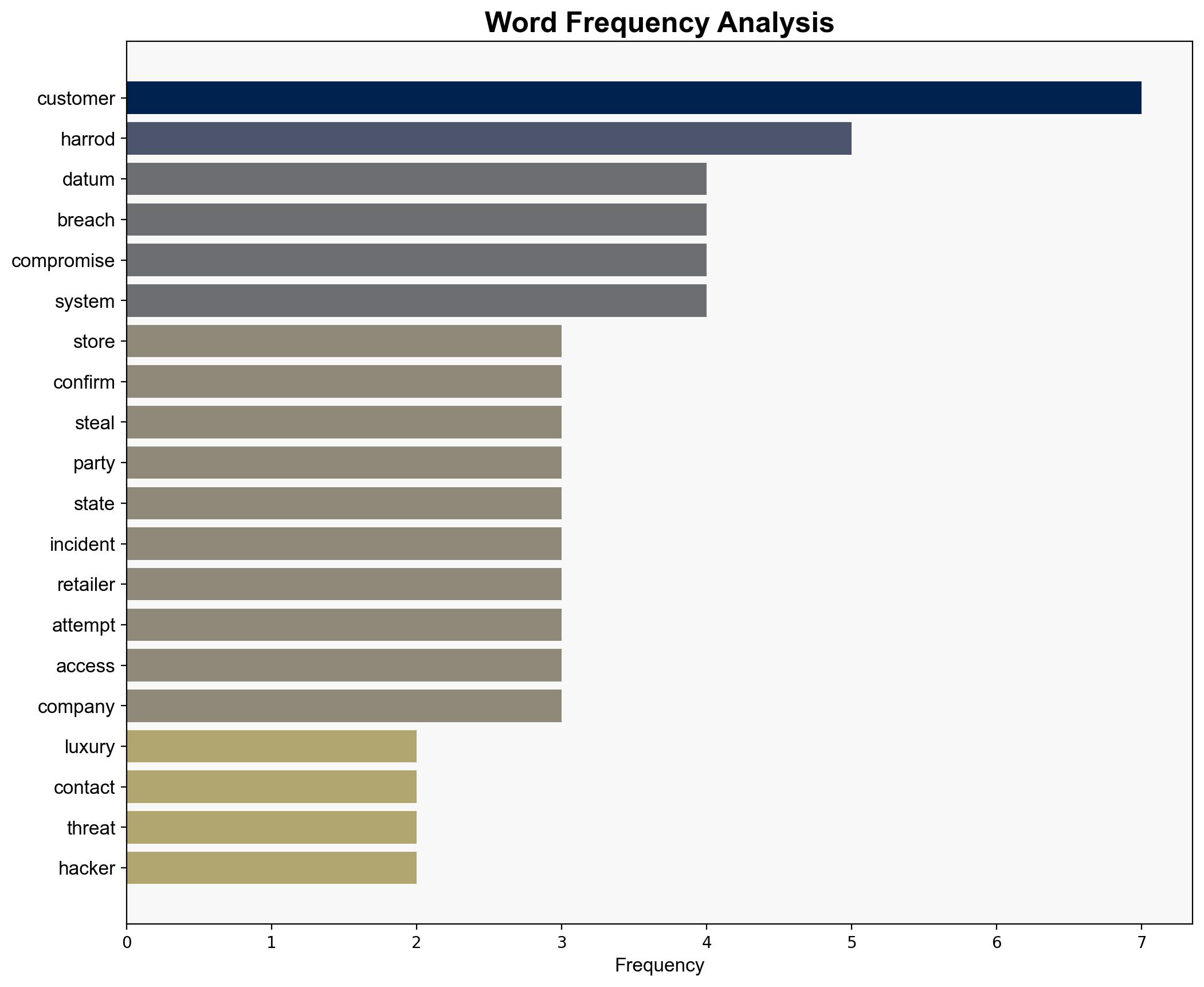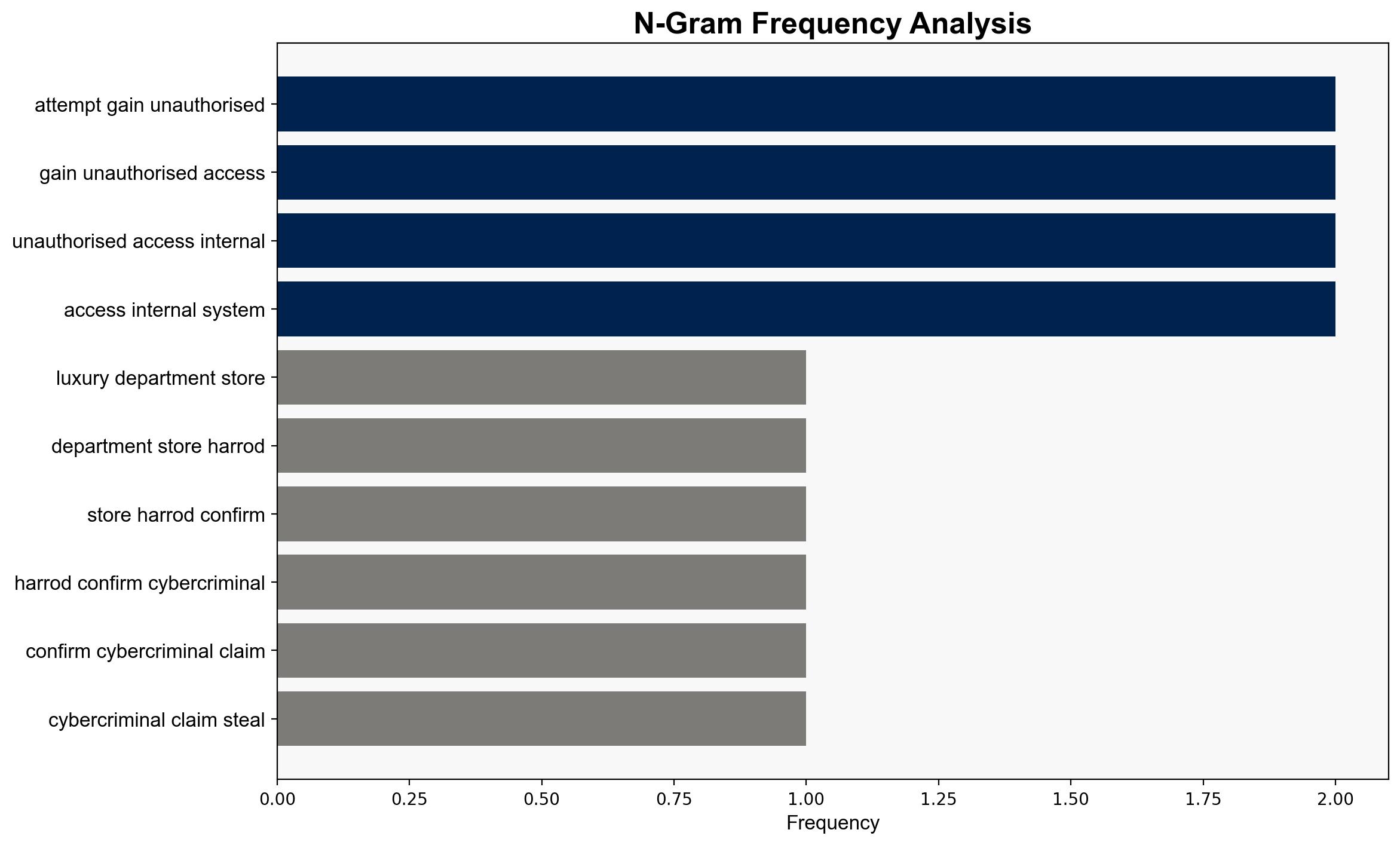Harrods Data Breach 430000 Customer Records Stolen Via Third-Party Attack – HackRead
Published on: 2025-09-29
Intelligence Report: Harrods Data Breach 430000 Customer Records Stolen Via Third-Party Attack – HackRead
1. BLUF (Bottom Line Up Front)
The Harrods data breach, involving 430,000 customer records, appears to be a targeted attack exploiting third-party vulnerabilities. The most supported hypothesis is that cybercriminals are focusing on supply chain weaknesses to bypass direct security measures. Confidence level: Moderate. Recommended action: Strengthen third-party cybersecurity protocols and enhance monitoring of supply chain interactions.
2. Competing Hypotheses
Hypothesis 1: The breach was orchestrated by a sophisticated hacking group exploiting third-party vulnerabilities as a strategic entry point, possibly linked to broader campaigns against UK retailers.
Hypothesis 2: The breach was an isolated incident, resulting from opportunistic cybercriminals targeting Harrods due to its high-profile status, with no direct connection to other attacks.
Using ACH 2.0, Hypothesis 1 is better supported due to the pattern of similar attacks on UK retailers and the mention of a notorious hacking group, Scatter Spider, suggesting a coordinated effort.
3. Key Assumptions and Red Flags
Assumptions:
– The attackers specifically targeted Harrods through its supply chain.
– The breach is part of a larger campaign against UK retailers.
Red Flags:
– Lack of detailed information on the third-party provider’s security measures.
– Absence of confirmation on whether the same group is responsible for previous attacks.
– Potential underreporting of the extent of data compromised.
4. Implications and Strategic Risks
The breach highlights vulnerabilities in supply chain cybersecurity, posing risks of cascading attacks across interconnected systems. Economically, it could lead to reputational damage and financial losses for Harrods. Geopolitically, it underscores the need for enhanced cybersecurity collaboration among UK retailers. Psychologically, it may erode consumer trust in data security.
5. Recommendations and Outlook
- Enhance cybersecurity protocols for third-party providers and conduct regular audits.
- Implement advanced threat detection systems to identify and mitigate supply chain vulnerabilities.
- Scenario Projections:
- Best: Strengthened security measures prevent future breaches, restoring consumer confidence.
- Worst: Continued exploitation of supply chain vulnerabilities leads to widespread data breaches across the sector.
- Most Likely: Incremental improvements in security reduce but do not eliminate the risk of similar attacks.
6. Key Individuals and Entities
– Harrods
– Scatter Spider (hacking group)
– Third-party provider (unnamed)
7. Thematic Tags
national security threats, cybersecurity, counter-terrorism, regional focus




